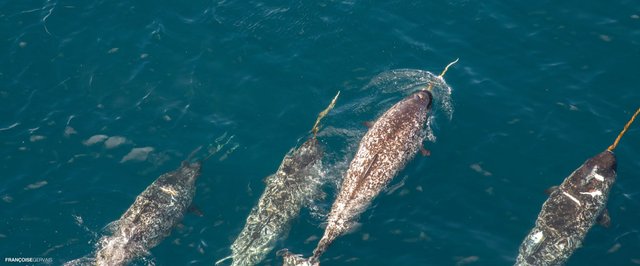Narwhals are medium-sized whales living in the Arctic waters, commonly known as "Arctic unicorns" or "unicorns of the sea" due to the large "tusks" they possess. They are most closely related to the beluga whale.

Cute, right? Let's dig deeper:
The tusk is actually a tooth (an incisor to be precise) that grows straight through the the male's jaw, up to 10 feet in length. Sometimes females have it as well.

Some narwhals develop two tusks, although it's a very rare occurrence.
They change color throughout their life. They are born grey and their color darkens through adolescence but then it lightens through adulthood, with old narwhals being almost completely white.
Image by Francois Gervaise – arctickingdom.com

They are also called "unicorns of death" because they use their tusks to stun fish that swim deep under the Arctic ice.
Narwhals dive to depths of over 1 km as often as 15 times per day, coming out for air through the cracks in the ice sheet.
The term narwhal comes from the Old Norse words nar (corpse) and whal (whale).
People used to believe that narwhal tusks were unicorn horns and that they had the power to neutralize poison. For that reason they were many times more valuable than gold.
Image by DanielParkinson – redbubble.com

Maybe they were right.
~
If you want to learn more about narwhals you could go ask one.
Have a great day and be nice to each other!
Hi! I am a robot. I just upvoted you! I found similar content that readers might be interested in:
https://en.wikipedia.org/wiki/Narwhal
Downvoting a post can decrease pending rewards and make it less visible. Common reasons:
Submit